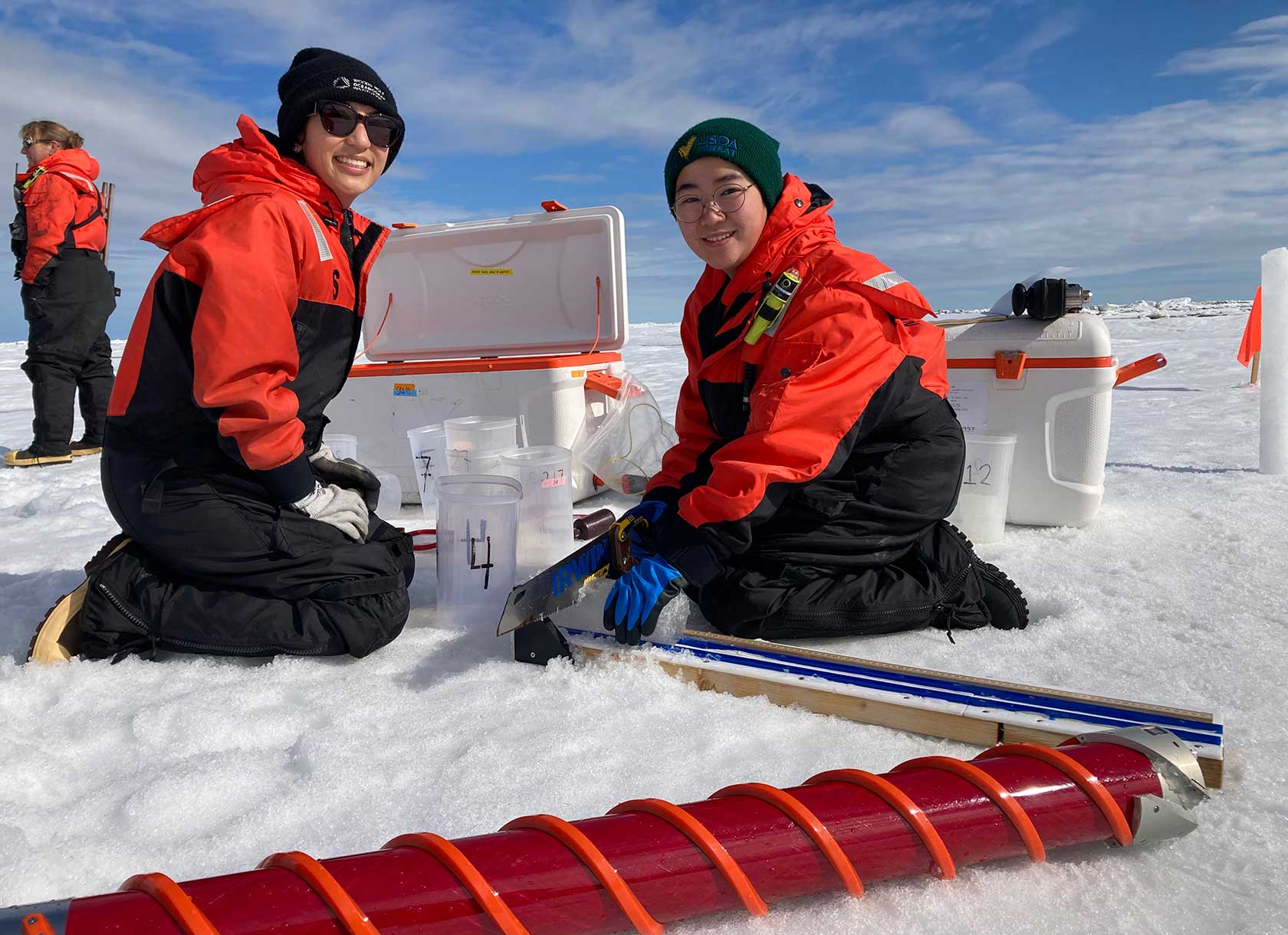By Mаdeleine Nаkаmura

As the world braces for a future defined by climate change, earth sciences researchers are concerned with understanding the mechanisms by which human activity affects the planet’s ecosystems. Stephanie Lim ’18 is working to deepen our understanding of those mechanisms through her graduate research in biological oceanography at Stanford University.
This summer, Lim embarked on a 45-day research cruise in the Alaskan Arctic. During the cruise, she and her fellow researchers gathered data about the algal blooms found in the Chukchi Sea, a marginal sea of the Arctic Ocean. “The main goal of the cruise was to understand the ultimate destination of the carbon that is photosynthesized by single-celled algae in the Chukchi,” Lim explains. “For instance, were the blooms eaten by animals, or did they sink to the seafloor?” Her research focused on understanding the characteristics of algal blooms in order to clarify their role in the carbon cycle—the exchange by which carbon moves between the land, the ocean, the atmosphere, and living organisms.
Blooms in the Chukchi Sea are some of the biggest in the world, and they play a critical role in the Arctic food web. Lim hopes that a better understanding of these algal blooms will enable researchers to broadly predict the environmental future of the Chukchi. The Chukchi has shown the effects of climate change for at least 30 years, and it supports several coastal Alaskan towns with its abundance of marine life, making its vulnerability especially concerning.
“The Arctic Ocean is warming at four times the global average, and sea ice is disappearing rapidly,” Lim says. “As sea ice is lost, the balance of algal blooms is likely to shift, which may cause cascading changes to the ecosystem and carbon cycle.”
Ever since becoming interested in the field through an oceanography course at Scripps, Lim says, “I’ve never looked back!” The cruise this summer was an exciting experience from a research perspective, but it was also an opportunity to witness the unique beauty of the sea ice—a beauty that has captivated Lim since 2017, when she fell in love with the subject while studying abroad in Australia during her junior year at Scripps. Lim participated in the School for International Training’s Rainforest, Reef, and Cultural Ecology program, through which she ended up at the University of Tasmania and worked under Dr. Delphine Lannuzel and Dr. Sébastien Moreau on a project modeling sea ice biogeochemistry.
“I was just completely taken with the pictures of the environment. I really wanted to be out there someday,” Lim says. She was fascinated by the extreme nature of the polar oceans, leading her to decide on her current research focus. “It’s amazing that organisms can actually survive and thrive in sea ice,” she says. “I’d never seen the Arctic before the sea ice melts in the summer, and it really informed my understanding of an ecosystem that I had previously only studied with models and satellites. It’s such a cool, alien environment, and I love that I get to do interdisciplinary work that combines biology, chemistry, and physics.”
Just as her study abroad opportunity at Scripps set her on the path toward her current research focus by introducing her to a fascinating new world, Lim credits Scripps with helping her build a strong foundation in scientific research. Through the training she received in her classes and in Associate Professor of Biology Sarah Gilman’s lab, she learned to write effectively, read scientific papers, apply statistics, and analyze data, all of which have served her well in her graduate studies. “My time at Scripps led to such a cool journey,” Lim says.

